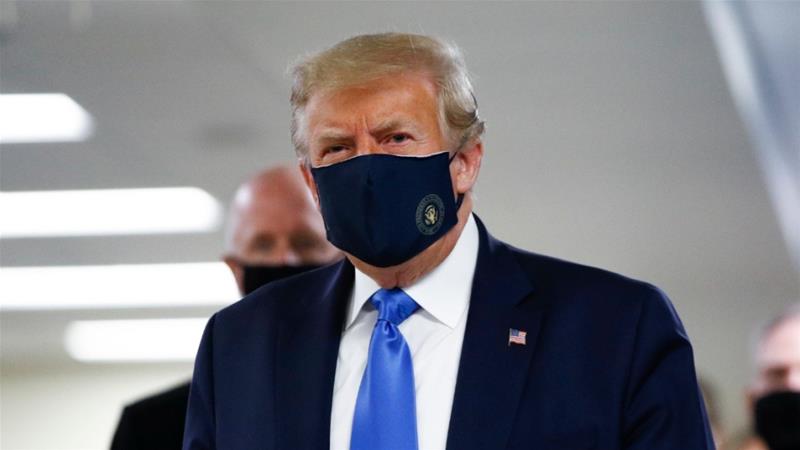
President Donald Trump said Friday he was poised to sign executive orders to extend aid to Americans facing hardship due to the coronavirus pandemic, though negotiations continued between his administration and Democratic leaders in Congress on a new emergency spending bill.
“End of the week,” Trump said on the timing of when he might sign the orders. “They’re being drawn (up) by the lawyers right now.”
But he also said his economic team “continues to work in good faith to reach an agreement with Democrats in Congress” on a relief package including unemployment benefits and protections against evictions.
“If Democrats continue to hold this critical relief hostage, I will act under my authority as president to get Americans the relief they need,” Trump told a news conference at his golf club in Bedminster, New Jersey.
Democratic House Speaker Nancy Pelosi said her party had agreed to lower the relief package size to $2 trillion from $3 trillion, but the White House continues to resist aid to state and local governments that economists say will be critical to avoiding a new round of layoffs.
“I’ve told them, come back when you are ready to give us a higher number,” Pelosi told reporters after an hour-long meeting with Treasury Secretary Steven Mnuchin.
Trump said his executive orders would defer payroll tax until at least the end of the year, defer student loan payments and extend an eviction moratorium.
He also said he would extend enhanced unemployment benefits until the end of the year – a key source of contention between the White House and Democrats.
An additional $600 in weekly federal payments to the unemployed expired at the end of July, and Republicans want to slash the figure. Trump did not say how much the payments would be under his executive order.
The stalemate on the relief negotiations came as official figures showed the US economy regained 1.8 million jobs in July, a solid but unremarkable result that comes as economists warn challenges to the pandemic recovery are growing.
As COVID-19 cases spiked in several states in recent weeks and forced some businesses to shut their doors again, economists warned of rising concerns that the labor market could take a turn for the worse, especially without federal backing.
“In the absence of additional fiscal aid, the broad economy risks losing momentum as it shifts into the second phase of its rehabilitation,” said Lydia Boussour of Oxford Economics.
There are just two more jobs reports before the November elections, leaving little time for Trump to show the kind of improvement that would boost his bid for a second term in the White House.
The unemployment rate fell to 10.2 percent last month from 11.1 percent in June, according to the government data, still slightly worse than the nadir of the global financial crisis in October 2009.
However, the Labor Department said some workers continue to be misclassified in the survey, and the jobless rate actually would have been a full point higher than reported.
The July employment gain marked a sharp slowdown from the increases of 4.8 million in June and 2.7 million in May, and means less than half the 22 million payroll jobs lost during the pandemic have been regained.
“This is far from normal, as another 13 million jobs are needed just to get us back to pre-pandemic employment levels,” said Lawrence Yun, chief economist of the National Association of Realtors.
· ‘Donald Trump failed to act’ –
Trump’s Democratic challenger Joe Biden seized on the high joblessness to attack the president.
“My heart goes out to the more than 16 million Americans still out of work. The truth is it didn’t have to be this bad, but Donald Trump failed to act,” Biden said on Twitter.
A third of private jobs gains were due to bars and restaurants reopening, according to the report.
The number of people on temporary layoff in July decreased by 1.3 million, but there were nearly three million workers who lost their jobs permanently, according to the latest data.
Meanwhile, 8.4 million people were working part-time not by choice but out of necessity, a group known as involuntary part-time workers.

